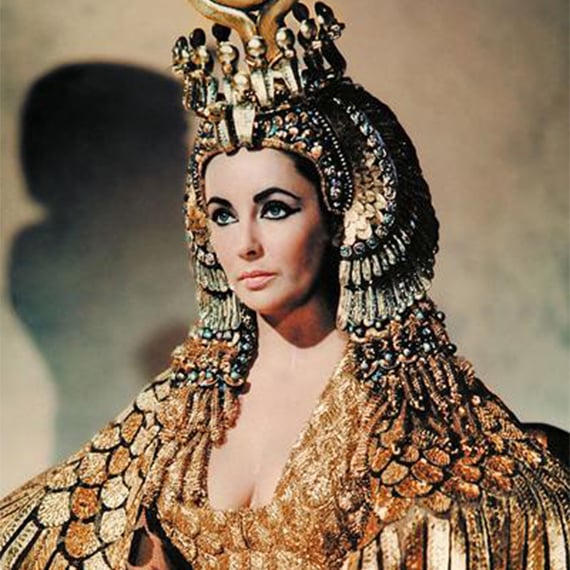Introduction:
Throughout history, the narratives of notorious figures have often been dominated by men. However, behind the scenes, there have been women whose actions have left an indelible mark on the pages of history, earning them notoriety and infamy. From queens and empresses to spies and assassins, these women defied societal norms and challenged the status quo in pursuit of power, revenge, or their own ambitions. In this exploration of the top 10 notorious ladies of history, we delve into the captivating stories of women who wielded influence, instilled fear, and left a lasting legacy, shaping the course of history with their actions and decisions.
Cleopatra:
Cleopatra, the last active ruler of the Ptolemaic Kingdom of Egypt, remains one of history’s most intriguing and notorious figures. Her reign, characterized by political maneuvering, strategic alliances, and romantic entanglements, continues to captivate the imagination of scholars and storytellers alike.

Born in 69 BCE, Cleopatra ascended to the throne alongside her younger brother Ptolemy XIII when she was just 18 years old. However, her ambitious nature and desire for sole power led to a power struggle within the kingdom, resulting in her exile. Undeterred, Cleopatra strategically aligned herself with Julius Caesar, the Roman general, and statesman.
In 48 BCE, Cleopatra famously seduced Julius Caesar, who was 30 years her senior, during his visit to Egypt. Their romantic liaison not only restored Cleopatra to the throne but also solidified her position as a powerful ally to Rome. Together, they had a son named Caesarion, whom Cleopatra claimed was Caesar’s offspring, further securing her ties to the Roman Empire.

Following Caesar’s assassination in 44 BCE, Cleopatra’s fortunes shifted once again. She aligned herself with Mark Antony, one of Caesar’s generals, in her ongoing struggle against her brother and rival, Ptolemy XIV. Cleopatra’s relationship with Antony evolved into a passionate romance, and they had three children together.
Cleopatra’s alliance with Mark Antony led to her involvement in the Roman political sphere, where she played a significant role in Antony’s military campaigns and governance of the eastern Roman territories. However, their union ultimately led to their downfall when they faced defeat against Octavian, Caesar’s adopted heir, in the Battle of Actium in 31 BCE.
Faced with defeat and capture, Cleopatra and Mark Antony chose to end their lives rather than submit to Octavian’s rule. Cleopatra’s death by suicide, reportedly through the bite of an asp, marked the end of the Ptolemaic dynasty and the annexation of Egypt into the Roman Empire.
Cleopatra’s legacy is multifaceted and enduring. She is remembered as a skilled diplomat, a shrewd strategist, and a formidable ruler who navigated the treacherous political landscape of the ancient world. Her romantic entanglements with Julius Caesar and Mark Antony have inspired countless works of literature, art, and film, immortalizing her as a symbol of beauty, power, and tragedy. Despite her ultimate defeat, Cleopatra’s influence on history and popular culture remains undeniable, ensuring her place as one of the most notorious figures of antiquity.
Lucrezia Borgia:
Lucrezia Borgia, a prominent figure in Renaissance Italy, is renowned for her involvement in political intrigue, scandal, and accusations of poisoning and incest. Born into the powerful Borgia family in 1480, Lucrezia’s life was shaped by the ruthless ambitions and machinations of her father, Pope Alexander VI, and her brother, Cesare Borgia.

Lucrezia’s early years were marked by strategic marriages arranged by her father to strengthen the Borgia family’s political alliances. At the age of 13, she was married to Giovanni Sforza, the illegitimate son of a powerful Italian nobleman. However, the marriage was annulled by her father on the grounds of non-consummation, as it no longer served the Borgia family’s interests.
Subsequently, Lucrezia was married off to Alfonso of Aragon, the Duke of Bisceglie, in another politically motivated union. However, this marriage also faced challenges, including accusations of infidelity and plots to overthrow Alfonso. In 1500, Alfonso was murdered, and rumors circulated that Lucrezia and her brother Cesare were involved in his assassination.
Lucrezia’s reputation was further tarnished by accusations of poisoning, with rumors suggesting that she used poison to eliminate her enemies and rivals. While these allegations were never proven, they contributed to her infamy and the perception of her as a femme fatale.
In addition to the scandalous accusations surrounding her personal life, Lucrezia was also embroiled in the political machinations of her family. Her father, Pope Alexander VI, and her brother, Cesare, sought to expand their influence and power in Italy through alliances, diplomacy, and military conquests. Lucrezia played a role in these schemes, acting as a pawn in her family’s quest for dominance.
Despite her controversial reputation, Lucrezia Borgia was also known for her patronage of the arts and culture. She was a patron of artists and scholars, fostering a vibrant cultural scene in Renaissance Italy.
In the centuries following her death, Lucrezia Borgia’s name became synonymous with political intrigue, scandal, and corruption. Her life has inspired numerous works of literature, theater, and film, cementing her place as one of history’s most notorious figures from the Renaissance era.
Mary, Queen of Scots (Scotland and England)
Mary, Queen of Scots, remains one of the most compelling and tragic figures in the history of Scotland and England. Born in 1542, Mary ascended to the Scottish throne at just six days old following the death of her father, King James V. Her tumultuous reign was marked by political intrigue, religious conflict, and personal tragedy, ultimately culminating in her execution.
From a young age, Mary’s life was shaped by the complex politics of Renaissance Europe. Her marriage to Francis II of France strengthened the alliance between Scotland and France, but it also made her a target for rival factions within Scotland and England. After Francis’s death in 1560, Mary returned to Scotland, where she faced numerous challenges to her authority, including religious tensions between Catholics and Protestants.

Mary’s reign was further complicated by her controversial marriages and romantic entanglements. Her second marriage to Henry Stuart, Lord Darnley, ended in betrayal and murder, with Darnley’s suspicious death leading to accusations against Mary and her subsequent marriage to the Earl of Bothwell, who was widely believed to be responsible for Darnley’s assassination.
These scandals and political maneuverings made Mary a target for her Protestant opponents, particularly in England, where her cousin, Queen Elizabeth I, viewed her as a rival claimant to the English throne. Mary’s involvement in various plots and conspiracies against Elizabeth only heightened tensions between the two queens and ultimately sealed her fate.
In 1568, Mary was forced to abdicate the Scottish throne in favor of her infant son, James VI. She sought refuge in England, hoping for Elizabeth’s protection, but instead found herself imprisoned for nearly two decades. During her captivity, Mary became embroiled in various plots to overthrow Elizabeth and regain her throne, leading to her eventual trial and execution for treason in 1587.
Mary, Queen of Scots, remains a figure of enduring fascination and debate. Her tragic life and untimely death have inspired countless works of literature, theater, and film, with historians continuing to reassess her legacy and the complexities of her reign. Though she may have been a victim of the political machinations of her time, Mary’s story serves as a poignant reminder of the dangers and consequences of power and ambition in the tumultuous world of Renaissance Europe.
Anne Boleyn (Tudor England)
Anne Boleyn, a prominent figure in Tudor England, is perhaps best known for her tumultuous marriage to King Henry VIII and her subsequent execution, which have cemented her status as one of history’s most controversial and intriguing figures.
Born in the early 16th century, Anne Boleyn rose to prominence at the English court as a lady-in-waiting to Queen Catherine of Aragon, Henry VIII’s first wife. Anne’s wit, charm, and intelligence captivated Henry, who was determined to annul his marriage to Catherine in order to marry Anne and secure a male heir to the throne.

Anne’s refusal to become Henry’s mistress and her insistence on marriage led to a protracted and contentious legal battle with the Catholic Church, ultimately resulting in the English Reformation and the establishment of the Church of England with Henry as its Supreme Head. In 1533, Henry and Anne were married in a secret ceremony, and Anne was crowned queen consort of England.
However, Anne’s failure to produce a male heir, combined with her increasingly strained relationship with Henry and the influence of her political enemies, led to her downfall. In 1536, Anne was arrested on charges of adultery, incest, and treason, along with several of her alleged lovers, including her own brother. Despite the lack of substantial evidence, Anne was found guilty and sentenced to death.

On May 19, 1536, Anne Boleyn was executed by beheading at the Tower of London, marking the first time in history that an English queen had been publicly executed. Her death sent shockwaves throughout Europe and forever altered the course of English history.
Despite her tragic end, Anne Boleyn’s legacy endures. She is remembered as a woman of intelligence, ambition, and courage, who dared to challenge the conventions of her time and pursue her own desires. Anne’s story has inspired countless works of literature, art, and film, with historians continuing to debate her true motivations and the circumstances of her downfall. Whether viewed as a victim of Henry VIII’s capriciousness or a political pawn in the game of Tudor politics, Anne Boleyn remains a figure of fascination and controversy, her life and death emblematic of the turbulent times in which she lived.
Madame du Barry (Pre-Revolutionary France)
Madame du Barry, a prominent figure in pre-Revolutionary France, was renowned for her beauty, charm, and controversial rise to power as the mistress of King Louis XV.

Born Jeanne Bécu in 1743, Madame du Barry began her life in humble circumstances, raised in poverty and obscurity. However, her striking beauty and vivacious personality caught the attention of wealthy and influential men in Parisian society.
In her early twenties, Jeanne caught the eye of Jean-Baptiste du Barry, a wealthy merchant who became her lover and arranged for her education and refinement. Through his connections, Jeanne was introduced to the glamorous world of the French court, where she quickly captivated the attention of King Louis XV.
In 1769, at the age of 26, Jeanne officially became the king’s mistress, following a lavish ceremony in which she was presented at court. As the king’s favorite, Madame du Barry wielded considerable influence over Louis XV and was showered with luxurious gifts and privileges.

However, Madame du Barry’s position at court was not without controversy. Her lowly origins and lack of noble blood made her the subject of scorn and jealousy among the aristocracy, who viewed her with disdain and resentment. Despite her efforts to win favor through extravagant spending and patronage of the arts, she remained an outsider in the rarefied world of the French court.
Madame du Barry’s influence waned following the death of Louis XV in 1774 and the ascension of his grandson, Louis XVI, to the throne. With the onset of the French Revolution and the growing discontent among the French populace, Madame du Barry’s association with the old regime made her a target for revolutionaries.
In 1793, during the height of the Reign of Terror, Madame du Barry was arrested on charges of treason and conspiracy against the Republic. She was tried, convicted, and ultimately executed by guillotine, joining the ranks of the many aristocrats and former courtiers who met a similar fate during the revolution.
Despite her tragic end, Madame du Barry remains a fascinating figure in French history, remembered for her beauty, wit, and controversial role in the decadent and turbulent world of pre-Revolutionary France. Her story serves as a poignant reminder of the excesses and injustices of the ancien régime, and the dramatic upheaval that swept through France in the years leading up to the Revolution.
Wu Zetian (Tang Dynasty China)
Wu Zetian, a formidable figure in the history of the Tang Dynasty in China, stands out as the only woman to ever rule China in her own right. Her ascent to power was characterized by shrewd political maneuvering and ruthless tactics.
/GettyImages-986828171-f443d3fedf6042b788b33258c84735f6.jpg)
Born in 624 during the Tang Dynasty, Wu Zetian’s early life was not indicative of the power and influence she would later wield. She entered the imperial court as a concubine of Emperor Taizong, eventually catching the eye of his son, Emperor Gaozong. Wu’s intelligence, ambition, and strategic alliances within the court enabled her to rise through the ranks, culminating in her eventual marriage to Emperor Gaozong.
Upon Emperor Gaozong’s death in 683, Wu Zetian seized the opportunity to consolidate her power. She ruled as regent for her sons, but it wasn’t long before she deposed them and declared herself Empress regnant of the Zhou Dynasty, marking the first and only time a woman held the title of Emperor in China.

Wu Zetian’s reign was marked by significant political reforms and advancements in culture and governance. She implemented measures to centralize imperial authority, reformed the civil service examination system, and promoted Buddhism as the state religion. However, her rule was also marked by suspicion, intrigue, and the ruthless elimination of political rivals.
Wu Zetian’s ascent to power and her subsequent reign have been the subject of much debate and controversy among historians. While some view her as a visionary leader who brought stability and prosperity to China, others see her as a ruthless and power-hungry autocrat who stopped at nothing to maintain her grip on power.
Regardless of differing opinions, Wu Zetian’s legacy as the only woman to rule China in her own right remains indelible. Her reign serves as a testament to the complex and dynamic nature of power politics in ancient China, and her influence continues to be felt in the annals of Chinese history.
Elizabeth Báthory (Hungary)
Elizabeth Báthory, a figure of infamy in Hungarian history, is remembered for the gruesome accusations of her brutality and cruelty. Born into the influential Báthory family in 1560, Elizabeth’s life took a dark turn as she gained notoriety for allegedly bathing in the blood of young girls in a quest to retain her youth and beauty.
As a member of the Hungarian nobility, Elizabeth enjoyed immense wealth and privilege. However, her behavior grew increasingly erratic and disturbing over time. Rumors began to swirl about her involvement in occult practices and the torture and murder of young servant girls.
The extent of Elizabeth’s crimes came to light in 1610 when authorities investigated the deaths of several young girls in her care. Witnesses testified to gruesome acts of torture and abuse, including the draining of their blood for Elizabeth’s purported beauty treatments. Though the exact number of victims remains unknown, estimates range from dozens to hundreds.

Elizabeth’s status as a noblewoman shielded her from immediate punishment, but public outrage eventually led to her arrest and trial. In 1611, she was convicted of numerous counts of murder and sentenced to life imprisonment. She spent her remaining years confined to a small room in Čachtice Castle, where she died in 1614.
The legend of Elizabeth Báthory has captivated imaginations for centuries, inspiring countless works of literature, film, and folklore. Some have sought to portray her as a victim of political intrigue or mental illness, while others emphasize her sadistic nature and thirst for power. Regardless of interpretation, Elizabeth Báthory’s name remains synonymous with cruelty and depravity, her story serving as a cautionary tale of unchecked ambition and the corrupting influence of power.
Catherine the Great (Russia)
Catherine the Great, Empress of Russia from 1762 until 1796, is often remembered for her remarkable political acumen and the numerous affairs that colored her personal life. Born in Prussia as Sophie of Anhalt-Zerbst, she married into the Russian royal family and eventually ascended to the throne after a coup d’état that ousted her husband, Emperor Peter III.
Catherine’s reign was marked by significant territorial expansion, administrative reforms, and cultural enlightenment. She pursued aggressive foreign policy objectives, expanding Russia’s borders through conquests in the Crimea, the Black Sea region, and parts of Poland. Her astute diplomacy and military prowess earned her the moniker “Catherine the Great.”
However, Catherine’s personal life also attracted attention. She engaged in a series of romantic liaisons and extramarital affairs, some of which influenced her political decisions. Her most infamous relationship was with Grigory Potemkin, a statesman and military leader who played a significant role in her court and in Russian affairs.
Despite her personal indiscretions, Catherine’s reign is generally regarded as a period of progress and stability for Russia. Her legacy includes the modernization of the country’s legal system, the promotion of education and the arts, and the expansion of Russia’s influence on the global stage.
Marie Antoinette (France)
Marie Antoinette, the Queen of France from 1774 until 1792, is often associated with extravagance and a perceived detachment from the struggles of the French people. Born an archduchess of Austria, she married the future King Louis XVI of France at the age of 14, cementing an alliance between Austria and France.
During her time as queen, Marie Antoinette became known for her lavish lifestyle and spending habits, which included opulent parties, extravagant fashion, and the construction of the Petit Trianon, a private retreat on the grounds of the Palace of Versailles. These displays of wealth and luxury fueled public resentment, especially during a time of economic hardship for many French citizens.
Marie Antoinette’s perceived detachment from the plight of the common people further fueled public anger. Rumors circulated that she famously uttered the phrase “Let them eat cake” when told that the French peasants were starving due to a shortage of bread, although historical evidence suggests she never actually said this. Nevertheless, this anecdote became emblematic of her perceived indifference to the suffering of the lower classes.
As tensions escalated in France and revolutionary fervor swept the nation, Marie Antoinette became a symbol of the monarchy’s excesses and was vilified by revolutionaries. Following the outbreak of the French Revolution in 1789, she and her husband were eventually captured, tried for treason, and executed by guillotine in 1793.
While Marie Antoinette’s personal character and actions did not single-handedly cause the French Revolution, her extravagant lifestyle and perceived disconnect from the struggles of the French people contributed to the growing discontent that ultimately led to the overthrow of the monarchy.
Griselda Blanco (Colombia)
Griselda Blanco, often referred to as the “Black Widow” or the “Queen of Cocaine,” was a notorious Colombian drug lord and the leader of the Medellín cartel during the 1970s and 1980s. Born in Cartagena, Colombia, Blanco rose to prominence as one of the most powerful and ruthless figures in the global drug trade.

Blanco gained notoriety for her brutal tactics, which included ordering numerous assassinations, orchestrating violent turf wars, and ruthlessly eliminating anyone who stood in her way. She was known for her strategic intelligence and willingness to use extreme violence to maintain control over her drug empire.
Under Blanco’s leadership, the Medellín cartel became one of the largest and most profitable drug trafficking organizations in the world, smuggling vast quantities of cocaine into the United States and other countries. Blanco’s influence extended beyond Colombia, with operations reaching into Miami, New York, and other major cities.
Despite her criminal activities, Blanco managed to evade law enforcement for many years through a combination of bribery, intimidation, and clever evasion tactics. However, her reign of terror eventually came to an end when she was arrested in 1985 in connection with multiple drug trafficking charges.

Blanco was ultimately convicted and sentenced to prison in the United States, where she spent the remainder of her life behind bars until her death in 2012. Her life story has been the subject of numerous books, articles, and documentaries, cementing her legacy as one of the most infamous figures in the history of the drug trade.
Final Words:
It’s important to recognize that the term “notorious” is subjective and can vary depending on historical context and perspective. While these women have undoubtedly made significant impacts on history, their legacies are complex and multifaceted.
Catherine the Great, Marie Antoinette, and Griselda Blanco each left indelible marks on the world, whether through political cunning, extravagant lifestyles, or criminal enterprises. However, their stories remind us that history is rarely black and white. Behind the labels of “notorious” lie nuanced narratives shaped by social, political, and cultural forces.
By acknowledging the complexity of their legacies, we gain a deeper understanding of the individuals behind the headlines and the broader historical contexts in which they operated. These women were not simply caricatures of villainy or heroism but were shaped by the circumstances of their time and their own unique motivations and ambitions.
Ultimately, studying their lives prompts us to question our preconceptions and delve deeper into the intricacies of history, reminding us that truth is often more nuanced than the labels we attach to it.
